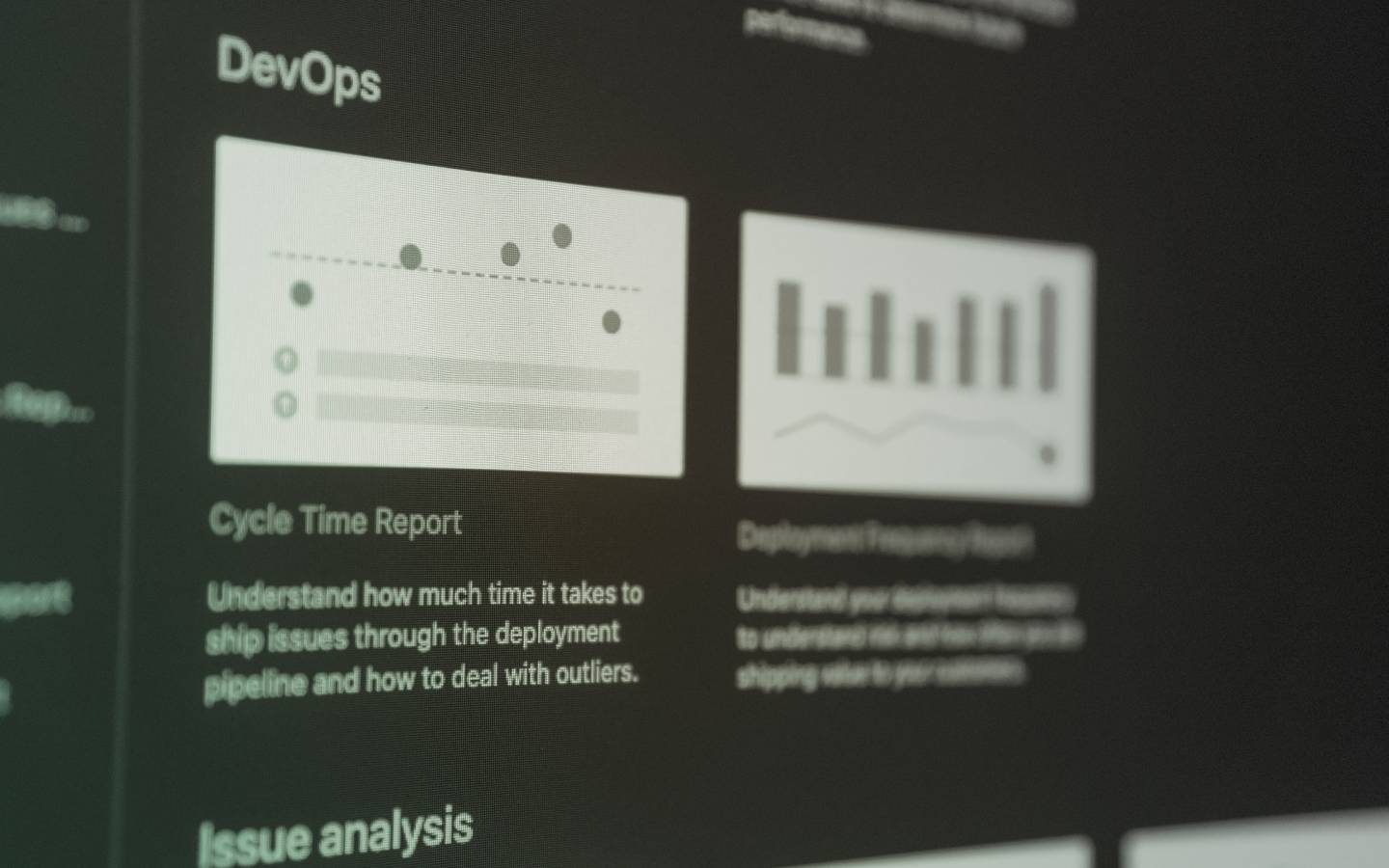Best software development tools
Version control and collaboration platforms
GitHub
Github is a web-based hosting service providing a central place where a worldwide community of developers can share, improve, and discuss software projects. It provides hosting for version control and software development, with a graphical interface and helpful collaboration and project management features. GitHub has the largest community of developers globally, making it commonly used for code review and issue tracking.
Bitbucket
Bitbucket and GitHub are both web-based platforms used by software development teams for version control and collaboration. Bitbucket offers Git repository hosting, issue tracking, branch permissions, and smart mirroring, while GitHub offers issue-tracking, pull requests, wikis, discussions, code reviews, and Codespaces for minimised software installation.
Project management tools for the software development process
ProofHub
ProofHub is one of the most popular project management tools. It is an intuitive, all-in-one software product offering features such as seamless team communication.
Planview
Planview is a visual management system that operates on the cloud. (formerly LeanKit) and is one of the most user-friendly software development tools for agile teams. With custom board templates, backlog management, and advanced Kanban features, it helps teams collaborate more efficiently and effectively.
Jira
Jira Software is a project management tool used by agile teams, and it claims to be the number one tool for software developers. Flexible, customisable, and scalable - it can handle teams of 1-20,000 users. Its wide range of features includes Scrum and Kanban boards, interactive timelines for epic and dependency tracking, advanced reporting and dashboard templates, customisable workflows, over 3,000 integrations, and code and deployment status overviews. These features make it a perfect choice to include in an arsenal of the software development process.
The platform empowers project managers through multiple views, dashboards, reporting, and insights. It also offers time tracking and user workload capabilities to ensure team efficiency. The drag-and-drop automation saves developers time on recurring tasks, while its out-of-the-box bug-tracking feature makes the process of bug tracking easier.
Development and debugging tools
Visual Studio Code
Visual Studio Code is a free and open-source code editor that is designed to be highly customisable and optimised for building modern web and cloud applications. It is packed with powerful features that make it easy to write and debug code, including syntax highlighting, code completion, and debugging tools.
It also includes built-in support for popular programming languages like JavaScript, TypeScript, Python, and more. With its rich ecosystem of extensions and plugins, Visual Studio Code can be tailored to the specific needs of developers and teams, making it a versatile and powerful tool for building software projects of all sizes and complexities.
Abode Dreamweaver CC
Adobe Dreamweaver CC is a web development tool that features a popular visual development application, allowing those without coding skills to use it.
Key development tools
The effectiveness and efficiency of software development can be significantly improved by utilising a combination of tools and technologies. In particular, examining the impact of using these tools collectively can provide valuable insights into how development efficiency can be enhanced, and how the software development life cycle can be accelerated.
By assessing the interplay between different tools and technologies, it is possible to identify potential bottlenecks or inefficiencies in software development processes. For example, using an integrated development environment (IDE) in conjunction with version control software can streamline the coding process and make it easier for developers to collaborate on projects.
Similarly, utilising automated testing tools can help to identify bugs and errors early in the development cycle, reducing the risk of delays or issues further down the line for development teams. By analysing the impact of these tools on development efficiency, it is possible to optimise the development process and improve overall software quality.

1. Integrated Development Environments (IDEs)
An Integrated Development Environment (IDE) is a software application that helps programmers develop software code efficiently, ensuring code quality.
They help programmers write computer programs - and make it easier for programmers by combining different tasks into one application, such as editing code, building programs, and fixing errors. It is a software package that developers use to work efficiently. It usually has a code editor, debugger, compiler, and designer, all in one - and offers features such as auto code completion and syntax highlighting to speed up the development process. Combining all the tools in one software application enables the developer to complete multiple different tasks in one interface whilst identifying and minimising coding mistakes and typos on the fly.
It helps with set-up time to ensure that the configuration is fast, simple and integrated. IDE simplifies setup/configuration by consolidating it in one place, eliminating the need to navigate through multiple development tools.
It also helps a developer be more efficient while working with a bunch of helper tools. A code editor with language-specific syntax highlighting helps by visualising the code. With debuggers and code completion features, it’s faster to get functional code done. Specific IDEs offer various other benefits to be configured by the user to fit their workflow or their team - which can help align development processes and ensure multiple developers work together seamlessly.
2. Version Control Systems (VCS)
Version control, also known as source control, is the practice of tracing and managing changes to software code. Version control systems are software tools that help software teams manage changes to source code over time.
As development environments have accelerated, version control systems help software development teams work faster and smarter. They’re especially useful for DevOps teams since they help them reduce development time and increase successful deployments. Widely used VCS tools include Git and SVN.

3. Bug Tracking and Project Management Tools
Bug tracking and project management tools are essential for effective software development. Bug tracking tools aid in identifying, prioritising, and resolving software issues - ensuring timely delivery of high-quality software. Project management tools, such as Jira and Trello, support agile development methodologies, facilitate collaboration, and aid in organising tasks and allocating resources. Both tools work together to streamline development processes, improve communication and enable teams to deliver successful software projects.
Bug-tracking software such as Jira provides numerous benefits to software development teams, enhancing their ability to manage and resolve issues efficiently. Here are some of the key advantages:
- Efficient bug identification and recording
- Practical assignment of bugs
- A holistic view of the backlog
- Custom workflows for issue types
- Prioritisation and workflow management
- Real-time notifications
- Smooth integration with development tools and project management software
- Automation for efficiency
- Documentation and custom fields
- Specialised workflows for bug management
Bug tracking tools provide a centralised platform for developers to report, track, and prioritise software issues such as bugs, errors, or defects. This ensures that no issues slip through the cracks and helps teams identify and address problems early on in the development process.
4. Code Editors
Code editors are indispensable tools for developers, enabling efficient coding with features such as syntax highlighting, automatic indentation, error-checking, and code snippets. Understanding the use of code editors is crucial for efficient coding.
For beginners, there are a variety of code editors available, such as Visual Studio Code, Atom, Notepad, and Sublime, many of which are available for free. Some popular lightweight code editors include Visual Studio Code, Notepad, Bluefish, Atom, and Sublime Text.
5. Testing Frameworks
Exploring the significance of testing frameworks in ensuring the reliability and functionality of software. It means performing tests on applications via different automation tools to check how applications behave or respond to different actions. These tools can be both open-sourced and licensed. When the application is deployed, a variety of users perform a variety of actions on the application.
Essentially, test automation is the process of automating well-known or predictive actions of users to make sure the application behaves as expected. Testing frameworks are significant in that they ensure the reliability and functionality of software.
6. Containerisation and Orchestration Tools
Containers are software packages that automatically deploy and manage containerised applications without worrying about underlying infrastructure. Container orchestration and associated tools can be implemented anywhere containers are, allowing for automated lifecycle management.
Benefits of container orchestration include -
- Simplified operations
- Reliable application development
- Scalability
- Lower costs
- Enhanced security
- High availability
- Enhanced productivity

Challenges and Considerations
When it comes to selecting and integrating tools for a project, it's crucial to consider various factors to ensure that the process is smooth and efficient. One of the first steps is to identify potential challenges that may arise during the selection and integration process. This could involve assessing the compatibility of different tools, evaluating the level of expertise required to integrate them, and identifying any potential roadblocks that could hinder the successful implementation of the tools.
Once potential challenges have been identified, it's important to discuss considerations for choosing the right set of tools based on project requirements. This could involve evaluating the functionality of different tools, assessing their ease of use, and considering their cost and scalability. Additionally, it's important to ensure that the tools selected align with the overall goals and objectives of the project and that they can be seamlessly integrated into existing workflows.
By taking the time to identify potential challenges and carefully consider project requirements, it's possible to select and integrate tools that will enhance the productivity and success of the project.
Customisation and Developer Preferences
Developers have diverse preferences when it comes to tool choices. Each developer may have their own set of experiences, skills, and working styles that may influence their tool preferences. It is essential to consider these individual differences when choosing the right tools for a project.
Customisation is crucial when it comes to optimising the performance of a development team. Developers must have access to the tools that best suit their needs and that enable them to work efficiently. By providing customised tools based on individual or team needs, developers can work seamlessly and achieve their goals effectively. Therefore, it is crucial to emphasise the importance of customisation in the development process.
The takeaway
In the world of software development, it is crucial to keep up with cutting-edge tools and technologies. Taking advantage of these key tools enables developers to enhance their skills and create innovative and robust software solutions. These tools include programming languages, frameworks, libraries, and development environments that support the creation of high-quality software products.
Programming languages such as Python, JavaScript, and Java are widely used in software development and offer different strengths and weaknesses depending on the project requirements. Frameworks like React, Angular, and Vue.js facilitate the development of complex and scalable applications, while libraries like jQuery and Bootstrap provide a set of pre-built components that can be easily integrated into the development process.
Development environments like Visual Studio Code, Eclipse, and IntelliJ IDEA offer a range of features and integrations that streamline the development process and make it easier for developers to work more efficiently. By leveraging this software development tool list, developers can not only save time and effort but also create more robust and reliable software solutions that meet the needs of modern businesses and end-users. Tim O'Brien - Developer
Tim O'Brien - Developer
Frequently Asked Questions
What is a development tool?
A development tool is software or hardware used by developers to create, debug, maintain, or support other software applications. These tools assist developers in various tasks throughout the software development lifecycle.
What tools are used in software development?
Software development involves a wide range of tools for different purposes. Some common tools include integrated development environments (IDEs), version control systems (e.g., Git), project management tools (e.g., JIRA), debugging tools, testing frameworks, and build automation tools (e.g., Jenkins).
What are programming design tools?
Programming design tools, also known as software design tools, are used by developers to plan, design, and visualise the architecture and structure of software systems before actual coding begins. These tools help in creating diagrams, flowcharts, and other representations of the software's design, aiding in communication and decision-making during the development process.
What is a C programming tool?
A C programming tool is a software application or utility specifically designed to aid developers working with the C programming language. These tools can include text editors or IDEs with features tailored for C development, compilers, debuggers, code analysers, and libraries specific to C programming. They help streamline the process of writing, compiling, debugging, and maintaining C code.


